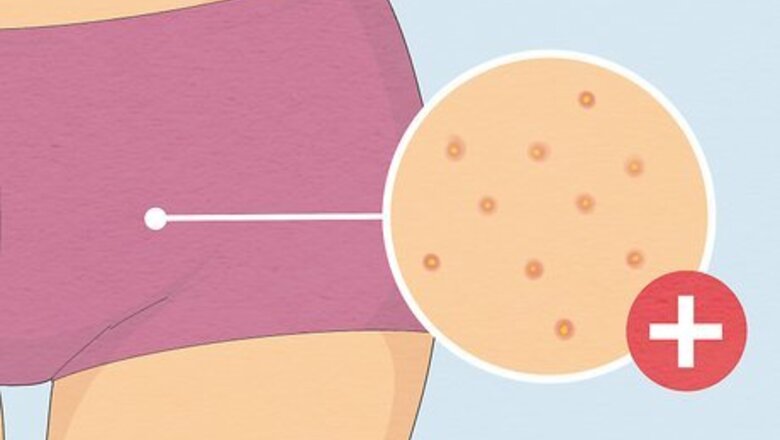
views
X
Trustworthy Source
PubMed Central
Journal archive from the U.S. National Institutes of Health
Go to source
They commonly appear during puberty and are harmless—they are not infectious and not considered an STD (sexually transmitted disease) like herpes and genital warts are. No treatment is typically required, although getting rid of them for cosmetic reasons is common. Laser and other surgical treatments are the most effective medical treatments.
Getting Rid of Fordyce Spots
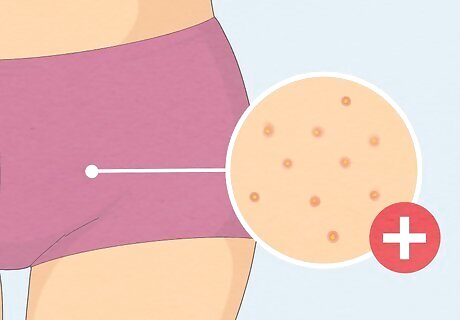
Consult with a dermatologist. If you notice little bumps on your genitals or around the borders of your lips that aren't going away or are bothering you, get a referral from your family doctor to a dermatologist (a skin specialist). The dermatologist will be able to diagnose your condition and put your mind at ease because Fordyce spots can sometimes look like small warts or the initial stages of a herpes outbreak. Fordyce spots are a very common phenomenon and appear in about 85% of the population at some time in their lives—males are a little more likely to develop them than females are. It's important to realize that Fordyce spots are harmless, painless, not infectious, and do not require treatment. Their removal should be for cosmetic reasons only. Fordyce spots are much more noticeable when the skin is stretched and may only be seen during an erection (in males) or during pubic hair management (a bikini wax) for females.
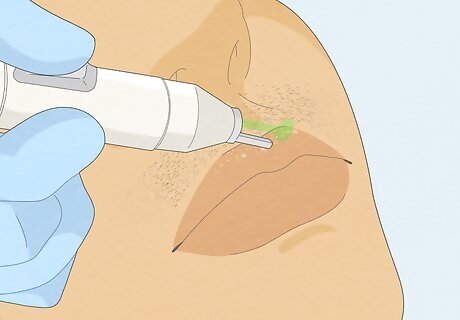
Ask about laser treatments. If you decide to remove some Fordyce spots for cosmetic reasons, talk to your dermatologist about available laser treatments, which are the most common method of getting rid of them (and certain other skin conditions). Vaporizing laser treatments such as carbon dioxide (CO2) lasers have been used with some success on Fordyce spots, but so have pulsed dye lasers. Ask your doctor which may be most appropriate for your condition and budget. CO2 lasers were the earliest gas lasers developed and remain the highest-power continuous wave laser treatment currently available for various skin conditions. However, CO2 laser ablation can leave scars afterward, so it may not be appropriate for Fordyce spots on the face. In contrast, treatment with pulsed dye lasers is more expensive than CO2 lasers, but may be less likely to leave scars.
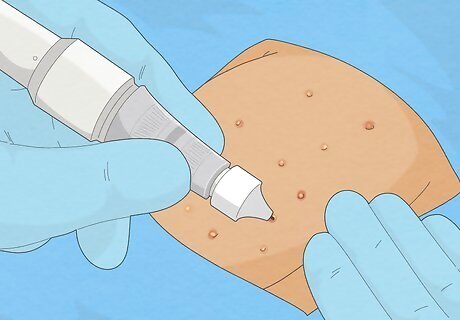
Consider micro-punch treatments instead. Micro-punch surgery is a procedure that involves using a pen-like device to punch a small hole in the skin and remove tissue. It's often used in hair transplant surgery, but research indicates it can be very effective for removing Fordyce spots also, especially on the genitalia. The risk of scarring with micro-punch surgery is less than CO2 lasers and the spots don't seem to return, which is a possibility with CO2 and pulsed dye laser treatments. A local anesthetic is needed to eliminate the pain of micro-punch surgery. The tissue removed with micro-punch techniques is not destroyed (unlike laser therapy) so it can be looked at under a microscope to rule out other more serious skin conditions, such as warts or cancer. Micro-punch treatments are generally very quick and can remove dozens of Fordyce spots within minutes, making them ideal for people who have multiple spots on their genitalia or face.
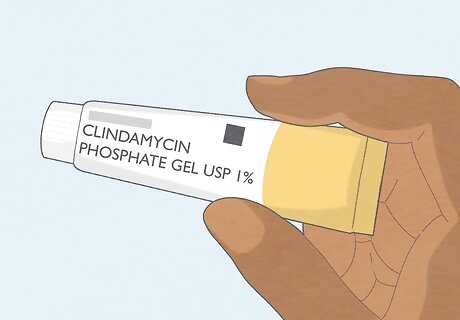
Think about using topical prescription creams. There's some evidence to suggest that hormonal imbalances triggered by puberty, pregnancy, and menopause can cause or contribute to Fordyce spots in the same way they can contribute to acne (pimples). As such, a variety of prescription creams that are normally used on acne and other skin blemishes can sometimes yield results on Fordyce spots. Ask your dermatologist about the potential for using benzoyl peroxide, topical glucocorticoids, retinoids, clindamycin, or pimecrolimus. Clindamycin cream is especially helpful for combating inflamed sebaceous glands, although it's rare for Fordyce spots to become swollen. For younger women, going on oral contraceptives may reduce or eliminate Fordyce spots, much like how they impact acne. CO2 laser ablation is often combined with the use of topical exfoliating acids, such as trichloracetic and bichloracetic acids.
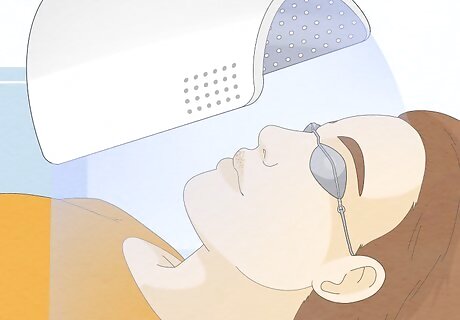
Ask about photodynamic therapy. Photodynamic therapy is a light-activated treatment. A medication called 5-aminolevulinic acid is applied to the skin, allowed to penetrate, and then is activated with a light source such as a blue light or a pulsed dye laser. This treatment can also treat and prevent certain skin cancers and acne. Be aware that this treatment can be expensive. This treatment also makes the skin more sensitive to the sun temporarily.
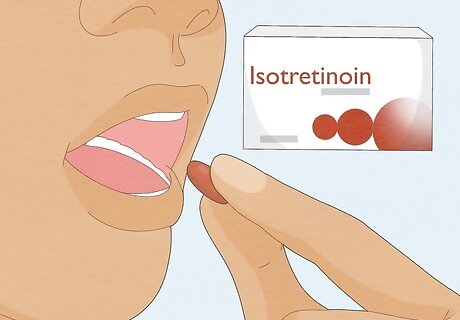
Look into isotretinoin. Isotretinoin can take several months to work but it can give long-lasting results for Fordyce spots. This treatment works well for acne and other similar conditions of the sebaceous glands. Isotretinoin has some serious risks and possible side-effects, including possible birth defects, so it should only be considered for serious conditions. Women who take isotretinoin must abstain from sex or use birth control.
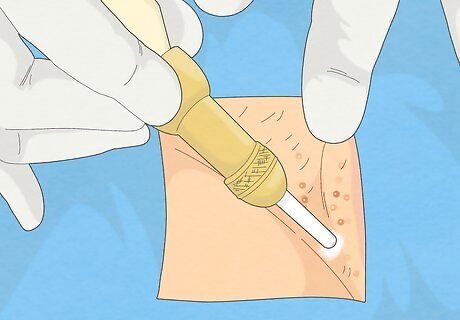
Ask about cryotherapy. Cryotherapy is the process of freezing off the bumps using liquid nitrogen. Talk to your dermatologist about the possibility of using this treatment to get rid of Fordyce spots.
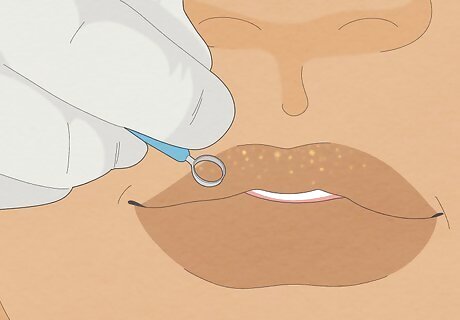
Find out about electrodessication (cauterization). This is a form of laser therapy that burns off the Fordyce spots. Talk to your dermatologist about whether or not this might be an option for you.
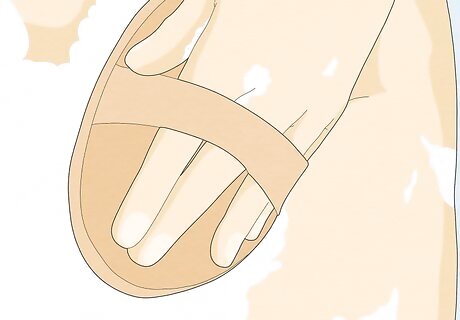
Practice good hygiene. Keeping your skin clean and free of excess oils and bacteria can help reduce the occurrence of Fordyce spots in some people (particularly during teen years and pregnancy, when hormone levels soar), but it's not a reliable way of getting rid of existing spots in most cases. Using clarifying agents to clean your face and genitals may help to unclog pores and sebaceous glands, which is also an effective strategy to prevent black heads and pimples. Wash your genitals and face thoroughly on a regular basis, particularly after exercising and sweating. Consider using a mild exfoliating agent, such as a loofah pad, when cleaning your skin. If you have Fordyce spots on your genitalia, avoid shaving your pubic hair because the spots might become more noticeable. Getting laser hair removal may be a better choice.
Differentiating Fordyce Spots from Other Conditions
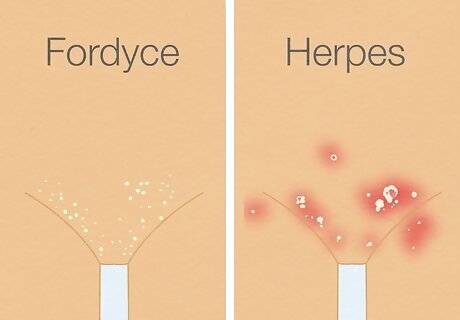
Don't confuse Fordyce spots with herpes. Although Fordyce spots appear in the same areas of the body as herpes lesions (around the lips and genitalia), they are very different conditions. Unlike Fordyce spots, herpes lesions look like red blisters or ulcers and they are initially very itchy before becoming painful, usually described as burning pain. Also, herpes lesions are usually larger than Fordyce spots. Herpes are caused by the herpes simplex virus (either type 1 or 2) and are very contagious. In contrast, Fordyce spots are not contagious. After an outbreak, herpes lesions fade away and usually only reappear in times of stress. Fordyce spots sometimes fade away, but usually they are permanent or even get a little worse with age.
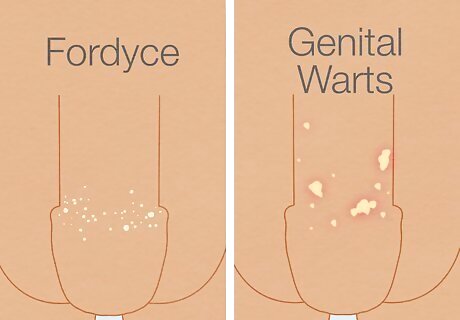
Differentiate Fordyce spots from genital warts. Fordyce spots can look a lot like genital warts, particularly during their early stages when the warts are quite small. Both conditions also appear around the genitalia. However, genital warts can grow to be much larger than Fordyce spots and are caused by HPV or human papillomavirus. HPV is also contagious and transmitted primarily by skin-to-skin contact — through a cut, abrasion or small tear in your skin. As genital warts grow, they often develop into cauliflower-like bumps or tiny stem-like protrusions. In contrast, Fordyce spots often look like "chicken skin" or sometimes "goose bumps" especially when the skin is stretched. Genital warts often spread to the anus regions, whereas Fordyce spots rarely do. Genital warts increase your risk of cancer of the cervix. In contrast, Fordyce spots are not associated with any other condition.
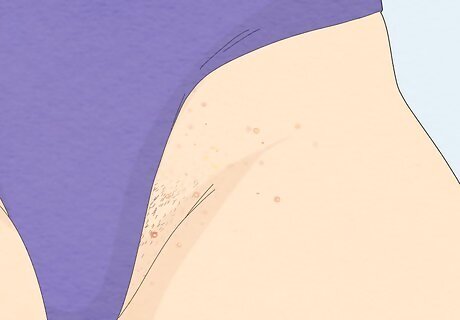
Don't mistake Fordyce spots for folliculitis. Folliculitis is an inflammation of the hair follicles that's commonly seen around the opening of the vagina and base of the penis. Folliculitis involves the formation of little pustules around the pubic hair follicles. They are frequently itchy, sometimes painful, red, and release some pus if squeezed (similar to a pustule pimple). In contrast, Fordyce spots are rarely itchy, never painful, and can sometimes release a thick, oily discharge if squeezed (similar to a blackhead pimple). Folliculitis is often caused by shaving the pubic region and irritating hair follicles. Bacteria are sometimes involved, although it's not considered a contagious condition. Folliculitis is often successfully treated with topical creams or oral antibiotics and better hygiene measures, including quitting shaving with a razor. It's not recommended to squeeze Fordyce spots because you may inflame them and make them larger.

















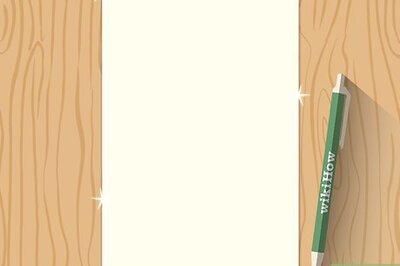
Comments
0 comment